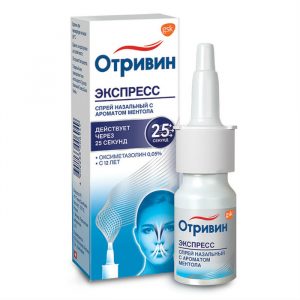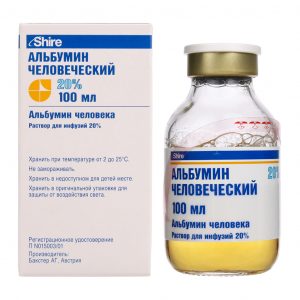Description
Intramuscular injection
Pharmacological action
Pharmacodynamics
Amitriptyline is an antidepressant (tricyclic antidepressant). It also has some analgesic (central origin), H2-histamine-blocking and antiserotonin effects, helps to eliminate night urinary incontinence and reduces appetite. It has a strong peripheral and central anticholinergic effect, due to the high affinity for m-cholinergic receptors, a strong sedative effect associated with affinity for H1-histamine receptors, and alpha-adrenergic blocking effect.
Has the properties of an antiarrhythmic drug (PM) subgroup Ia, like quinidine in therapeutic doses, slows down ventricular conduction (with an overdose, it can cause severe intraventricular block). The mechanism of antidepressant action is associated with an increase in the concentration of norepinephrine in the synapses and / or serotonin in the central nervous system (CNS) (a decrease in their reverse absorption). The accumulation of these neurotransmitters occurs as a result of inhibition of their reverse capture by membranes of presynaptic neurons.
With prolonged use, it reduces the functional activity of beta-adrenergic and serotonin receptors in the brain, normalizes adrenergic and serotonergic transmission, and restores the balance of these systems, which is disturbed in depressive states. In anxiety-depressive states, it reduces anxiety, agitation and depressive symptoms. The mechanism of antiulcer action is due to the ability to block H2-histamine-new receptors in the parietal cells of the stomach, as well as to have a sedative and m-anticholinergic effect (in case of peptic ulcer of the stomach and duodenal ulcer, it alleviates pain, and accelerates healing of ulcers).
Efficacy in bedwetting is apparently due to anticholinergic activity, which leads to an increase in the ability of the bladder to stretch, direct beta-adrenergic stimulation, activity of alpha-adrenergic agonists, accompanied by increased tone of the sphincter, and central blockade of serotonin uptake. It has a central analgesic effect, which is believed to be due to changes in the concentration of monoamines in the central nervous system, especially serotonin, and the effect on endogenous opioid systems. The mechanism of action for bulimia nervosa is unclear (may be similar to that for depression). A distinct effect of the drug in bulimia is shown in patients both without depression and in its presence, while a decrease in bulimia can be observed without a concomitant weakening of depression itself. When conducting general anesthesia, it lowers blood pressure (BP) and body temperature. Does not inhibit monoamine oxidase (MAO). The antidepressant effect develops within 2-3 weeks after the start of use.
Absorption
Amitriptyline has a high absorption. The maximum concentration in plasma (Cmax) is 0.04-0.16 μg / ml. Equilibrium concentration is achieved approximately 1-2 weeks after the start of a course of treatment. The concentration of amitriptyline in tissues is higher than in blood plasma. The bioavailability of amitriptyline with various routes of administration is 33-62%, its active metabolite of nortriptyline is 46-70%. Distribution volume (Vd) – 5-10 l / kg. Effective therapeutic concentrations of amitriptyline in the blood are 50-250 ng / ml, for nortriptyline (its active metabolite) is 50-150 ng / ml. Communication with plasma proteins – 92-96%. Amitriptyline passes through histohematological barriers, including the blood-brain barrier (including nortriptyline), penetrates the placental barrier, and is excreted in breast milk in concentrations similar to plasma.
Metabolism
Metabolism of amitriptyline is carried out mainly due to demethylation (isoenzymes CYP2D19, CYP3A) and hydroxylation (isoenzyme CYP2D6) followed by conjugation with glucuronic acid. Metabolism is characterized by significant genetic polymorphism. The main active metabolite is a secondary amine – nortriptyline. The metabolites cis- and trans-10-hydroxyamitriptyline and cis- and trans-10-hydroxynortriptyline have a similar activity profile to nortriptyline, although their effect is much less pronounced.
Demethylnortriptyline and amitriptyline-N-oxide are present in plasma in negligible concentrations, the latter metabolite is practically devoid of pharmacological activity. Compared with amitriptyline, all metabolites have a significantly less pronounced m-anticholinergic effect.
The main factor determining the renal clearance and, accordingly, the concentration in the blood plasma, is the rate of hydroxylation. In a small proportion of people, genetically determined delayed hydroxylation is observed.
Excretion
The half-life (T1 / 2) from blood plasma is 10-28 hours for amitriptyline, for nortriptyline – 16-80 hours. The average total clearance of amitriptyline is 39.24 ± 10.18 l / h. Amitriptyline is excreted mainly by the kidneys and through the intestine in the form of metabolites. About 50% of the administered amitriptyline is excreted in the urine as 10-hydroxy-amitriptyline and its conjugate with glucuronic acid, about 27% is excreted as 10-hydroxy-nortriptyline and less than 5% of amitriptyline is excreted as the starting material and nortriptyline. Complete elimination of amitriptyline from the body occurs within 7 days.
Elderly patients
In elderly patients, there is an increase in half-life and a decrease in clearance of amitriptyline due to a decrease in metabolic rate.
Patients with impaired liver function
Impaired liver function can slow down the metabolism of amitriptyline and increase its plasma concentrations.
Patients with impaired renal function
In patients with impaired renal function, the excretion of metabolites of amitriptyline and nortriptyline is slow, although the metabolism as such does not change. Due to its association with blood proteins, amitriptyline is not removed from the blood plasma by dialysis.
Indications
Endogenous depression and other depressive disorders.
Contraindications
Hypersensitivity,
use in conjunction with MAO inhibitors and 2 weeks before treatment,
myocardial infarction (acute and subacute periods),
arrhythmias,
severe atrioventricular block, and atrioventricular vesicular blocks .),
heart failure,
acute alcohol intoxication, acute intoxication with sleeping pills, analgesic and psychoactive drugs,
angle-closure glaucoma,
urinary retention, t including prostate hyperplasia,
paralytic intestinal obstruction,
pyloric stenosis,
hypokalemia,
concomitant use of drugs, lengthening the QT interval, or causing hypokalemia,
lactation period,
children under 18 years of age.
Use during pregnancy and lactation
If the drug is used by pregnant women, it is necessary to warn about the high risk of such intake for the fetus, especially in the I and III trimester of pregnancy. The use of high doses of tricyclic antidepressants in the third trimester of pregnancy can lead to neurological disorders in the newborn. There were cases of drowsiness in newborns whose mothers used nortriptyline (an amitriptyline metabolite) during pregnancy, and cases of urinary retention were noted.
Amitriptyline passes into breast milk. The concentration ratio of breast milk / plasma is 0.4-1.5 in a breastfed baby.
When using amitriptyline, breast-feeding should be discontinued.
If this is not done, you should monitor the condition of the baby, especially during the first four weeks after birth.
Breast-fed babies may experience unwanted reactions.
Special instructions
Before starting treatment, blood pressure control is necessary (in patients with low or labile blood pressure it can decrease even more) during treatment – control of peripheral blood (in some cases, agranulocytosis may develop, in connection with which it is recommended to monitor the picture blood, especially with an increase in body temperature, the development of flu-like symptoms and tonsillitis), with prolonged therapy – control of the functions of the cardiovascular system and liver.
Treatment with amitriptyline in old age should be closely monitored, with the use of minimal doses of the drug and their gradual increase, in order to avoid the development of delirious disorders, hypomania and other complications. In the elderly and patients with diseases of the functions of the cardiovascular system, control over the number of heart contractions (HR), blood pressure, ECG is shown. Clinically insignificant changes may occur on the ECG (smoothing of the T wave, ST segment depression, expansion of the QRS complex).
When using the drug in high doses, the likelihood of developing heart rhythm disturbances and severe arterial hypotension increases. The development of such conditions is also possible with conventional doses in patients with heart disease.
The use of the drug is possible only in a hospital, under the supervision of a doctor, in compliance with bed rest in the first days of therapy.
Care must be taken when abruptly moving to an upright position from a lying or sitting position.
Alcohol use should be excluded during treatment.
Assign no earlier than 14 days after the withdrawal of MAO inhibitors, starting with small doses.
With a sudden cessation of administration after prolonged treatment, withdrawal syndrome may develop.
Withdrawal symptoms: headache, nausea, vomiting, diarrhea, malaise, sleep disturbances, unusual dreams, agitation, motor restlessness, irritability, and general well-being.
Amitriptyline in doses above 150 mg / day reduces the threshold for convulsive activity (the risk of epileptic seizures in predisposed patients should be considered, as well as in the presence of other factors predisposing to the occurrence of convulsive syndrome, for example, brain damage of any etiology, the simultaneous use of antipsychotic drugs (antipsychotics), during the period of refusal of alcohol or the withdrawal of drugs that have anticonvulsant properties, such as benzodiazepines).
The simultaneous use of amitriptyline, antipsychotics, and hypnotics (droperidol) should be avoided. If necessary, simultaneous administration should be extremely careful.
When using amitriptyline to treat the depressive component of schizophrenia, it is possible to increase psychotic symptoms – in this case, it is advisable to prescribe amitriptyline in combination with antipsychotics.
Severe depression is at risk of suicidal behavior, which may persist until significant remission is achieved. In this regard, at the beginning of treatment, a combination with drugs from the benzodiazepine group or antipsychotic drugs and constant medical supervision (instructing trusted agents to store and dispense medicines) may be indicated.
In patients with cyclic affective disorders during the depressive phase, manic or hypomanic conditions may develop during therapy (dose reduction or drug withdrawal and prescription of an antipsychotic drug are necessary). After stopping these conditions, if there are indications, treatment in low doses can be resumed.
Due to possible cardiotoxic effects, caution is required when treating patients with thyrotoxicosis or patients receiving thyroid hormone preparations.
In combination with electroconvulsive therapy, it is prescribed only with careful medical supervision.
In predisposed patients and elderly patients, it can provoke the development of drug psychoses, mainly at night (after drug withdrawal they disappear within a few days).
May cause paralytic ileus, mainly in patients with chronic constipation, the elderly, or in patients who are forced to observe bed rest.
Caution must be exercised when administering the drug to patients with impaired liver function, and plasma concentrations of amitriptyline should be monitored whenever possible.
In patients with renal failure, the drug can be prescribed in usual dosages.
The drug is contraindicated in patients with prostatic hyperplasia, especially with urinary retention (see section Contraindications).
Patients receiving three / tetracyclic antidepressants concomitantly with local and general anesthetics may be at increased risk of developing arrhythmias and falling blood pressure.
Prior to general or local anesthesia, an anesthetist should be advised that the patient is taking amitriptyline.
Due to its anticholinergic action, tear secretion and a relative increase in the amount of mucus in the lacrimal fluid may occur, which can lead to damage to the corneal epithelium in patients using contact lenses.
Patients should inform their dentist about taking amitriptyline.
A dry mouth can lead to a change in the mucous membrane of the oral cavity, inflammation, a burning sensation, and tooth decay. It is recommended to undergo a regular examination by a dentist. The need for riboflavin may be increased.
Taking amitriptyline can change the body’s tolerance to insulin and glucose, which requires the correction of antidiabetic therapy in patients with diabetes mellitus. Depression can also affect glucose metabolism.
Cases of hyperpyrexia have been reported with tricyclic antidepressants when given concomitantly with anticholinergic or antipsychotic drugs, especially in hot weather.
Animal reproduction studies have shown adverse effects on the fetus, and adequate and strictly controlled studies in pregnant women have not been conducted. In pregnant women, the drug should only be used if the intended benefit to the mother outweighs the potential risk to the fetus.
passes into breast milk and may cause drowsiness in infants.
In order to avoid the development of withdrawal syndrome in newborns (manifested by shortness of breath, drowsiness, intestinal colic, increased nervous irritability, hypotension or hypertension, tremor or spastic phenomena), amitriptyline is gradually canceled at least 7 weeks before the expected birth.
Children are more sensitive to acute overdose, which should be considered dangerous and potentially fatal to them.
Suicide / Suicidal thoughts or a clinical worsening of the disease
Depression is associated with an increased risk of suicide. This risk persists until significant remission is achieved and may occur spontaneously throughout the course of therapy. Since the antidepressant effect develops only after a few weeks from the start of treatment, the patient’s condition should be carefully monitored until clinical improvement is achieved. Possible increased suicidal risk in the early stages of recovery.
Constant medical supervision of patients with suicidal thoughts and suicidal attempts in history is required, including against the background of therapy. Storage and distribution of drugs to such patients should be carried out by proxies.
Amitriptyline (like other antidepressants) can itself increase the frequency of suicides in people under 25 years old. Therefore, when prescribing amitriptyline to patients under 25 years of age, the risk of suicide and the benefits of antidepressant should be correlated. In short-term studies in people over 25 years old, the risk of suicide does not increase, and in people over 65 years of age it decreases slightly.
Any depressive disorder in itself increases the risk of suicide, so all patients should be monitored during antidepressant treatment to detect early violations or behavioral changes, as well as suicidal tendencies. Effect on the ability to drive vehicles and mechanisms
During the treatment period, care must be taken when driving vehicles and engaging in other potentially dangerous activities that require an increased concentration of attention and speed of psychomotor reactions.
Composition of
1 ml of solution for intramuscular injection contains:
active substance:
amitriptyline hydrochloride (in terms of amitriptyline) – 10 mg.
Dosage and administration of
Intramuscularly at a dose of 10-20-30 mg up to 4 times a day, the dose should be increased gradually, the maximum daily dose of 150 mg after 1-2 weeks, if possible, go to the inside of the drug. The duration of treatment is no more than 6-8 months.
Elderly people are given lower doses and increase them more slowly.
Amitriptyline may be prescribed in usual doses to patients with renal failure.
If the patient’s condition does not improve within 3-4 weeks of treatment, then further therapy is impractical.
Side effects of
From the hemopoietic organs: rarely – inhibition of bone marrow function, agranulocytosis, leukopenia, thrombocytopenia, eosinophilia frequency unknown – purpura.
From the side of metabolism: very often – weight gain, increased appetite rarely – loss of appetite very rarely – syndrome of inadequate hypersecretion of antidiuretic hormone frequency is unknown – hypo- or hyperglycemia, hyponatremia (decreased production of vasopressin), hypoproteinemia.
From the nervous system: very often – drowsiness, tremors, dizziness, headaches, confusion (in older patients, confusion can be manifested by anxiety, agitation, elements of hallucinatory delusional disorders), disorientation often – decreased concentration, impaired taste (dysgeusia) , peripheral neuropathy (paresthesia), agitation, increased and intensified epileptic seizures, extrapyramidal symptoms: ataxia, akathisia, parkinsonism, dystonic reactions, tardive dyskinesia, speech slowness infrequently – weakening of cognitive abilities, hypomania, mania, anxiety, insomnia, nightmares rarely – aggressiveness, delirium (in the elderly), hallucinations (in patients with schizophrenia), seizures very rarely – during treatment with amitriptyline and soon after its completion, suicidal thoughts, suicidal behavior, frequency is unknown – fainting, depersonalization, increased depression, yawning, activation of symptoms of psychosis, myoclonus, dysarthria, changes in electroenceph holograms (EEG).
On the part of the sensory organs: very often – decreased visual acuity, impaired accommodation often – mydriasis is rare – increased intraocular pressure, tinnitus, rarely – loss of accommodation ability, aggravation of narrow-angle glaucoma in the elderly.
From the cardiovascular system: very often – a feeling of palpitations, tachycardia, orthostatic hypotension, often – atrioventricular block (AV block), impaired intraventricular conduction, recorded only on the ECG, but not clinically manifested (increased intervals of PQ, QT, expansion of the QRS complex , signs of blockade of the bundle branch block, nonspecific changes in the ST interval or T wave, including in patients without heart disease) infrequently – arterial hypertension, arrhythmia, rarely – myocardial infarction.
From the digestive system: very often – dry mouth, constipation, nausea often – gum atrophy, inflammation of the oral cavity, dental caries, burning sensation in the mouth infrequently – diarrhea, vomiting, swelling of the tongue rarely – increased salivary glands, paralytic intestinal obstruction, hepatitis (including impaired liver function and cholestatic jaundice) frequency is unknown – heartburn, gastralgia, darkening of the tongue.
From the skin: very often – hyperhidrosis infrequently – skin rash, itching, hives, angioedema rarely – alopecia, photosensitivity reactions, hair loss. From the urinary system: infrequently – urinary retention, frequency unknown – pollacuria.
On the part of the reproductive system: very often – weakening or increased sexual desire often – in men erectile dysfunction, impotence rarely – in women galactorrhea, delayed orgasm, loss of ability to achieve orgasm, in men an increase in the size (swelling) of the testicles, delayed ejaculation, gynecomastia .
Laboratory indicators: often – ECG changes: increased intervals PQ, QT, expansion of the QRS complex, signs of blockade of the bundle of His bundle, nonspecific changes in the ST interval or T wave are rare – a violation of the functional state of the liver, an increase in the activity of alkaline phosphatase in the blood and transaminases.
Other: often – fatigue rarely – pyrexia, frequency unknown – decreased sweating, swollen lymph nodes.
Cancellation symptoms: after prolonged use with a sudden cessation of use, such undesirable reactions as nausea, vomiting, diarrhea, headache, malaise, insomnia, unusual dreams, unusual agitation, irritability after prolonged use with gradual cancellation – irritability, sleep disturbances, unusual dreams. The connection with the drug has not been established: lupus-like syndrome (migratory arthritis, the appearance of antinuclear antibodies and a positive rheumatoid factor), ageusia.
Some of the unwanted reactions, such as headache, tremors, impaired attention, constipation, and decreased libido, may be manifestations of depression and disappear as depression resolves.
Drug interaction
With the combined use of ethanol and drugs that depress the central nervous system (including other antidepressants, barbiturates, benzadiazepines and general anesthetics), a significant increase in the inhibitory effect on the central nervous system, respiratory depression and hypotensive effect are possible. Increases sensitivity to drinks containing ethanol. Increases the anticholinergic effect of drugs with anticholinergic activity (for example, phenothiazines, antiparkinsonian drugs, amantadine, atropine, biperidene, antihistamines), which increases the risk of side effects (from the central nervous system, vision, intestines and bladder).
When used together with antihistamines, clonidine – increasing the inhibitory effect on the central nervous system with atropine – increases the risk of paralytic intestinal obstruction with drugs that cause extrapyramidal reactions – an increase in the severity and frequency of extrapyramidal effects. With the simultaneous use of amitriptyline and indirect anticoagulants (coumarin or indadione derivatives), an increase in the anticoagulant activity of the latter is possible. Amitriptyline may increase depression caused by glucocorticosteroids (GCS).
When used together with anticonvulsants, it is possible to increase the inhibitory effect on the central nervous system, lower the threshold for seizure activity (when used in high doses) and decrease the effectiveness of the latter. Drugs for the treatment of thyrotoxicosis increase the risk of agranulocytosis. Reduces the effectiveness of phenytoin and alpha-blockers. Inhibitors of microsomal oxidation (cimetidine) lengthen T1 / 2, increase the risk of toxic effects of amitriptyline (may require a dose reduction of 20-30%), inducers of microsomal liver enzymes (barbiturates, carbamazepine, phenytoin, nicotine and oral contraceptives) decrease plasma concentration and decrease the effectiveness of amitriptyline. Fluoxetine and fluvoxamine increase the concentration of amitriptyline in plasma (a dose reduction of amitriptyline by 50% may be required).
When used together with cholinergic antagonists, phenothiazines and benzodiazepines, the mutual strengthening of the sedative and central anticholinergic effects and the increased risk of epileptic seizures (lowering the threshold of seizure activity) phenothiazines can also increase the risk of neuroleptic malignant syndrome. With the simultaneous use of amitriptyline with clonidine, guanethidine, betanidine, reserpine and methyldopa, a decrease in the hypotensive effect of the latter with cocaine is a risk of heart arrhythmias. Estrogen-containing oral contraceptive drugs and estrogens can increase the bioavailability of amitriptyline antiarrhythmic drugs (such as quinidine) increase the risk of rhythm disturbances (possibly slowing the metabolism of amitriptyline).
Joint use with disulfiram and other acetaldehydrogenase inhibitors provokes delirium. Incompatible with MAO inhibitors (an increase in the frequency of periods of hyperpyrexia, severe convulsions, hypertensive crises and the death of the patient are possible). Pimozide and probucol can increase cardiac arrhythmias, which is manifested in lengthening the QT interval on the ECG. It enhances the effect on epilephrine, norepinephrine, isoprenaline, ephedrine and phenylephrine on CVS (including when these drugs are part of local anesthetics) and increase the risk of heart rhythm disturbances, tachycardia, and severe arterial hypertension.
When used together with alpha-adrenostimulants for intranasal administration or for use in ophthalmology (with significant systemic absorption), the vasoconstrictor effect of the latter may increase. When combined with thyroid hormones – a mutual enhancement of the therapeutic effect and toxic effects (include cardiac arrhythmias and a stimulating effect on the central nervous system). M-anticholinergics and antipsychotic drugs (antipsychotics) increase the risk of hyperpyrexia (especially in hot weather). With a joint appointment with other hematotoxic drugs, an increase in hematotoxicity is possible.
Overdose
Symptoms:
From the CNS: drowsiness, stupor, coma, ataxia, hallucinations, anxiety, psychomotor arousal, decreased ability to concentrate, disorientation, confusion, dysarthria, hyperreflexia, muscle rigidity, choreoathetosis, epileptosis, epilepsy.
From the side of the CCS: blood pressure (BP) drop, tachycardia, arrhythmia, intracardiac conduction disturbance, characteristic of changes in the electrocardiogram (ECG) by tricyclic antidepressants (especially QRS), shock in very rare cases – cardiac arrest.
Others: respiratory depression, shortness of breath, cyanosis, vomiting, hyperthermia, mydriasis, excessive sweating, oliguria or anuria.
Symptoms develop 4 hours after overdose, reach a maximum in 24 hours and last 4-6 days. If you are overdosed, especially in children, the patient should be hospitalized.
Treatment: symptomatic and supportive therapy for severe anticholinergic effects (reduction of blood pressure, arrhythmia, coma, myoclonic epileptic seizures) – the introduction of cholinesterase inhibitors (use of physostigmine is not recommended due to increased risk of emergence. Control of CCS functions (including ECG) for 5 days (relapse may occur 48 hours later), anticonvulsant therapy, artificial lung ventilation (IVL), and other resuscitation activities are shown.
Hemodialysis and forced diuresis are ineffective.
Storage Conditions
In a dark place at a temperature not exceeding 25 ° C.
Keep out of the reach and sight of children.
Shelf life
3 years.
Deystvuyushtee substance
Amitriptyline
Terms and conditions
prescription
dosage form
injection
for
prescribing
for children over 6 years old, for adults prescribed by a doctor, prescribing children




